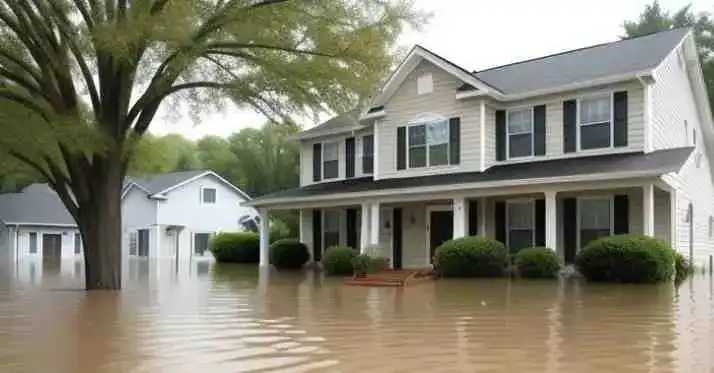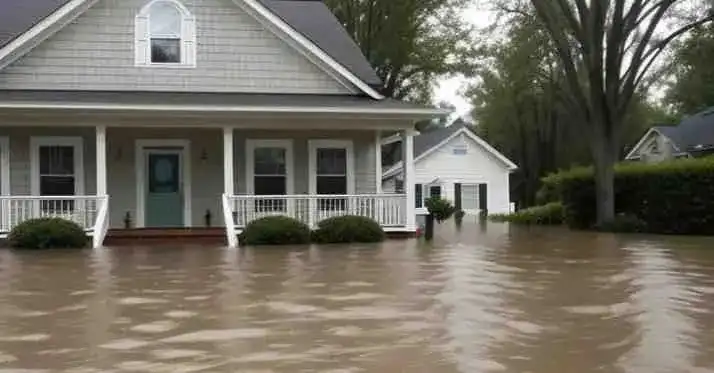Floods are among the most common and devastating natural disasters, causing immense damage to properties, infrastructure, and the environment. In India, the monsoon season frequently brings severe flooding, making it crucial for homeowners and businesses to understand the importance of flood insurance. This article explores the intricacies of flood insurance, its significance, types available, coverage details, and how to determine whether you need it.
What Is Flood Insurance?
Flood insurance is a specialized insurance policy designed to protect property owners from financial losses resulting from flooding. Unlike standard homeowners insurance policies, which typically exclude flood-related damages, flood insurance specifically addresses losses incurred during flood events.
Key Features of Flood Insurance:
- Designed for Flood Events: Flood insurance covers damages caused by rising water, heavy rains, and storm surges, ensuring that policyholders are financially protected from the unique risks associated with flooding.
- Coverage for High-Risk Zones: Flood insurance is often required for properties located in flood-prone areas. These high-risk zones are identified based on geographical data, historical flooding patterns, and FEMA’s flood zone maps.
- Available from Both Government and Private Insurers: Homeowners can choose between the National Flood Insurance Program (NFIP), a federal program, and private insurers, depending on availability and the specific needs of the property.
Why Flood Insurance Is Important
Flood insurance plays a critical role in protecting homeowners from the financial fallout associated with flooding. Here are the primary reasons why securing flood insurance is crucial:
- High Flood Risk: Many areas in India, especially low-lying regions and river basins, are highly susceptible to flooding during the monsoon season or due to heavy rainfall. This increased risk necessitates proactive measures, including flood insurance.
- Limited Coverage from Standard Policies: Most homeowners’ insurance policies exclude flood-related damages. This leaves homeowners vulnerable to significant financial loss during flooding events, making flood insurance essential for complete protection.
- Financial Protection: Flood insurance helps mitigate the financial impact of flood damage by covering repair and replacement costs. This can include rebuilding homes, replacing damaged belongings, and addressing other related expenses.
- Peace of Mind: Knowing that you have coverage in case of a flood can significantly alleviate anxiety for homeowners. It allows individuals and families to focus on recovery and rebuilding, rather than worrying about finances.
Types of Flood Insurance
Flood insurance is generally available in two primary forms, catering to different needs based on geographical risks and individual circumstances:
1. National Flood Insurance Program (NFIP):
- The NFIP is a federal program managed by the Federal Emergency Management Agency (FEMA). It provides flood insurance policies for homeowners, renters, and businesses in participating communities.
- NFIP policies typically offer standardized coverage options, making it easier for homeowners to understand their protections.
- Coverage is available for both building property and personal property, helping ensure comprehensive financial support in the event of a flood.
2. Private Flood Insurance:
- Private insurance companies also offer flood insurance as an alternative to the NFIP. These policies may provide additional coverage options or lower premiums based on individual assessments.
- Private flood insurance can offer flexibility, allowing policyholders to tailor their coverage to fit specific risks or preferences.
What Flood Insurance Covers
Flood insurance generally provides two categories of coverage: building property coverage and personal property coverage. Each type offers specific protections for different aspects of a property.
1. Building Property Coverage:
This coverage protects the physical structure of your home, including:
- The main structure itself, encompassing walls, foundation, and roof.
- Essential systems such as electrical, plumbing, and heating.
- Central air conditioning systems, furnaces, and water heaters.
- Permanently installed fixtures, including cabinets, countertops, and built-in appliances.

2. Personal Property Coverage:
This type of coverage protects personal belongings within the home, which may include:
- Furniture such as couches, chairs, tables, and beds.
- Clothing and personal accessories.
- Electronics including TVs, computers, and kitchen appliances.
- Valuable items like artwork and jewelry, up to specified limits outlined in the policy.
Exclusions in Flood Insurance
While flood insurance provides valuable coverage, there are specific exclusions that policyholders should be aware of to avoid surprises during claims:
- Losses from Landslides: Flood insurance does not cover damages resulting from landslides or mudflows, as these are considered separate risks.
- Sewage Backup Damage: Any damage caused by sewer backups is typically excluded from flood insurance policies unless specifically added through an endorsement.
- Underground Water Damage: Flood insurance does not cover damage from water seeping through the foundation or basement walls, which falls outside the definition of flooding.
- Outdoor Personal Property: Items stored outside the home, such as patio furniture or gardening equipment, may not be covered under standard flood insurance policies.
- Business Property: Any damage to business property or inventory located in the insured home may not be covered under standard flood policies.
How to Determine If You Need Flood Insurance
Deciding whether you need flood insurance involves assessing various risk factors. Here are key steps to consider:
1. Assess Risk Factors:
- Geographical Location: Properties situated near rivers, lakes, or coastal areas are more vulnerable to flooding and should be carefully evaluated.
- Elevation: Homes located in flood plains or low-lying areas are at higher risk and may require flood insurance to protect against potential damages.
- Historical Data: Researching past flood events in your area can provide insight into the likelihood of future flooding and inform your decision regarding flood insurance.
2. Use Flood Zone Maps:
FEMA provides flood zone maps that categorize different regions based on their risk of flooding. Properties located in high-risk flood zones (typically labeled as Zone A or V) usually require flood insurance, especially if the homeowner has a mortgage.
3. Local Climate Considerations:
Evaluating your local climate and the frequency of heavy rainfall or storms can also guide your decision. Regions that experience intense monsoon seasons or tropical storms may benefit from flood insurance, even if they are not categorized in high-risk flood zones.
How to Purchase Flood Insurance
If you determine that flood insurance is necessary for your home or business, follow these steps to secure a policy:
- Finding an Agent:
- Start by looking for a licensed insurance agent who specializes in flood insurance. These professionals can provide valuable insights into available coverage options and guide you through the application process.
- Requesting Quotes:
- Obtain quotes from multiple insurance providers, including both NFIP and private insurers. Comparing premiums, coverage limits, and deductibles will help you make an informed decision tailored to your needs.
- Comparing Coverage Options:
- Ensure that the coverage offered meets the requirements of your property. Pay special attention to what’s included in the policy and what exclusions apply. Understanding the nuances of each policy will help you select the best option.
Frequently Asked Questions
1. What is the difference between flood insurance and homeowners insurance?
Flood insurance specifically covers damages caused by flooding, while homeowners insurance generally does not include coverage for floods unless you add an endorsement or purchase a separate policy.
2. How much does flood insurance cost?
The cost of flood insurance varies based on several factors, including location, coverage amount, and risk assessment. In India, premiums for flood insurance can range from ₹5,000 to ₹20,000 per year, though higher-risk areas may see increased premiums.
3. Is flood insurance mandatory?
While flood insurance is not legally required for all properties, it may be mandated by lenders for homes located in high-risk flood zones, especially if the homeowner has a mortgage.
4. How long does it take for flood insurance to become effective?
Typically, flood insurance policies take about 30 days to become effective after purchase. It is crucial to plan ahead, particularly before the monsoon season or other periods of heavy rainfall, to ensure you have coverage when you need it.
5. Can I purchase flood insurance through my existing insurance provider?
Many insurance companies that offer homeowners insurance may also provide flood insurance policies. It’s advisable to check with your current provider to explore available options and determine if bundling policies could save you money.
Navigating the Claims Process
Understanding the claims process for flood insurance is essential for homeowners, as it can greatly affect the recovery process after a flood. Here are steps to take if you experience a flood loss:
- Document the Damage:
- Take extensive photos or videos of the damage to your property and personal belongings. This documentation will be vital for your insurance claim and helps ensure you receive the compensation you’re entitled to.
- Contact Your Insurance Provider:
- Immediately reach out to your insurance provider to initiate the claims process. They will guide you through the necessary steps and provide the forms needed to file your claim.
- Fill Out the Claims Forms:
- Complete the claims forms as accurately and thoroughly as possible. Include all required documentation, such as receipts for damaged items, repair estimates, and the initial damage documentation you collected.
- Schedule an Inspection:
- Your insurance company may send an adjuster to inspect the damage. Be prepared to show them around your property and provide any additional information they may need.
- Follow Up on Your Claim:
- Stay in regular contact with your insurance provider to check the status of your claim. Being proactive can help ensure a quicker resolution.
- Receive Payment:
- Once your claim is approved, you will receive compensation based on the coverage limits of your policy. Use these funds to begin repairs and replace damaged items as needed.
